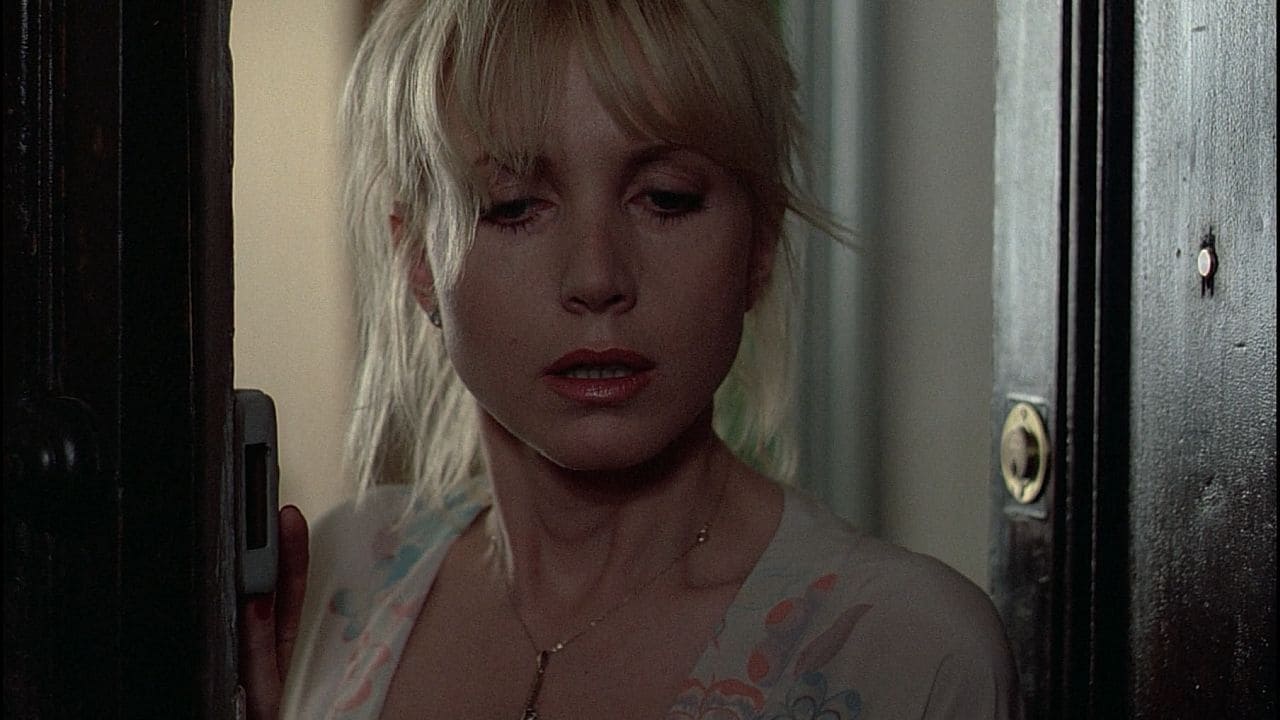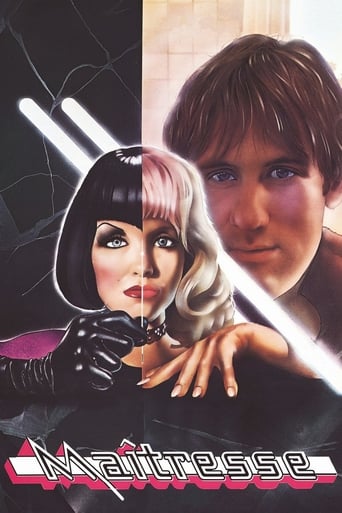jaibo
Strange, cold film about a petty thief who becomes the lover of a dominatrix. The most intriguing thing is the design of her abode, which has a petit bourgeois apartment above a dungeon, linked by a ladder which can be let down or drawn up to gain access. The implication of this seems to be that there's a link between the pleasures derived from a BDSM scene and those derived from a more normative relationship - in the end, both are about pleasure and power. Some haunting scenes, especially one where a horse is killed in a knacker's yard. Depardieu's performance is typical of his 70s studies of masculinity in crisis.The film is a kind of celebration of risk taking - the characters at the denouement foreshadow Cronenberg's auto-perverts in Crash - and a "do your own thing" type of liberation narrative. That the script doesn't excavate either where Ogier's wealthy clients get their money, nor the effect their exhibitionism and risk-taking might have on innocent by-standers shows that, whilst director Schroeder might think he has the gumption to explore "dangerous" and "outrageous" subject matter, he doesn't have the guts to really delve into the social implications of his characters and their lifestyles.
Autonome
Maîtresse is a typical story of seduction and obsession. The dialog is in French with subtitles. Without an unusual or groundbreaking plot, and not presented as a grand film, it was filmed in the popular style of French films of the time, many of which enjoy enduring popularity today because of their minimalist execution. It simply presents a story in an unpretentious format. It is not too sexually explicit visually, though the theme definitely is.The director, Barbet Schroder, has evolved into one of the incredible directors of our time. His life is probably more interesting even than most of his fictional characters, and his other films are a short list of some of my favorites.There is really only one noteworthy element of the film, and it is quite noteworthy. The central character, Ariane (Bulle Ogier), who is reminiscent of Catherine Deneuve, is quite seductive as a dominatrix who avails herself of a fetishist's dream chamber complete with a wardrobe that most people would not believe could have possibly existed when the film was made in 1973. It is the fantastic surprise of the film, and the character is easily 20 years ahead of her time.Anyone into edgy fashion today would be well advised to enjoy viewing this film and accept a humbling lesson concerning underground esthetic's that existed some 30 years ago. Indeed, this film alone may have helped to popularize modern fetishist, "sadist" or bondage sensibilities, especially in France. An interesting and odd film, decidedly kinky, and with an ending that makes a brief but incredible prediction of the work, "Crash" by J.G. Ballard, written soon after the film was released- or perhaps coincidentally.
alice liddell
Could you credit a film featuring an S&M dominatrix, a burly petty thief, and an all-powerful, mysterious businessman/probable pimp; a film which boasts elaborate scenes of bondage torture and mutilation, and a very graphic horse-slaughtering sequence, as well as more usual acts of petty thuggery, such as the hurling of a man down a stairs, or the drunken smashing of a bar-room window; could such a film be considered benevolent and optimistic? Because such is the ultimate feeling one gets from this weird, enigmatic, lovely film, once considered so scandalous it was banned in England, but now seems positively cuddly (the version I saw had four minutes cut. Go figure).Olivier is a petty thief who meets up with an old friend, now a door-to-door salesman selling books on the Fine Arts. After a dismal lack of success, they come upon a woman, Ariane (hint of the spider?), panicking because her pipes have burst. The men fix the problem, and she says she'll write to the tenant beneath, currently on holiday. Seeing a chance for a quick clean out, the men break in downstairs, only to find a torture chamber, precision instruments of pain, racks, crucifixes, cages, in one of which creeps a cowering man, and a barking doberman.This is the bondage chamber of Ariane, who descends from her own flat down metallic stairs in a fantastic rubber suit and cape, and blonde wig, admonishing the intruders. She asks Olivier to give her a hand with one of her clients, and they begin an affair. After getting over the shock of her profession, and initially content with his sponging life, he notices that Ariane has some kind of business relationship with the mysterious Gautier, whom he suspects to be her pimp. He goes to confront him.Even by the mid-70s, the idea of bourgeois respectability being propped up by less socially acceptable means was hardly a revolutionary insight, and MAITRESSE seems less progressive than, say, BELLE DE JOUR, with an ending that is depressingly patriarchal or joyfully subversive, depending on how you read it. The film's success lies in its sustaining of enigma, with Olivier as our guide to the many mysteries Ariane raises. How did she get the money to set up such an operation (and the S&M chamber is an extraordinary, metallic, futuristic contraption, full of thematically pointed mirrors and ice-blue neon)? Who is this mysterious Gautier - a Godot-like figure, always expected but never arriving? What does Ariane do by day? Why does she go too the country manor? Where are her family?Olivier's turning from a thief into a detective is part of his - and, by association, our, the viewer's - quest to explain Ariane, to deprive her of her power, which results precisely from her mystery. The bondage sessions, with those four minutes cut, are less an anthropological expose than comic (and some of them are very funny), and a literalisation of the real S&M that is going on, the power struggle between Ariane and Olivier, between the female bread-winner and her male dependent. Olivier says he wants to protect Ariane because she's scared, but he really wants to take over from Gautier in controlling her Olivier's increasing minimalising in the film is striking - having begun on his motorbike, the centre of interest, free, driving the action; from taking over his friend's job, bullying the clients, setting the plot in motion; he becomes a marginal figure, sulking from the sidelines, with nothing to do but observe like us, useless, uncomprehending, bait in a conspiracy theory that's making fun of him. This is an unusual act of restraint for an actor of Depardieu's munificence, and is communicated with visual bluntness - who would we rather look at: a hefty beefcake in a sweat-soaked singlet, or a beautiful housewife putting on the most fascinating outfits and make-up, like an actress at her dressing table?The style of the film adds to the air of paranoia and uncertainty. Having been told that the cuts related simply to the more extreme forms of mutilation, I assume that the ellipses and contradictions are part of the narrative method. This is all the more jolting because Schroeder's very full mise-en-scene seems to give us all the information we need, but how can we know anything when we identify with a character from whom everything is concealed? Seemingly realistic scenes turn out to be role-play and vice-versa (the Schroeder-Ogier connection with Rivette isn't as implausible here as you might first think). Schroeder refuses to make it easier by explanatory close-ups or expressive acting. The best thing is just to sit back and enjoy the confusion.

